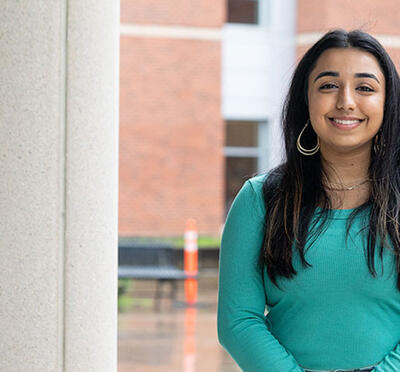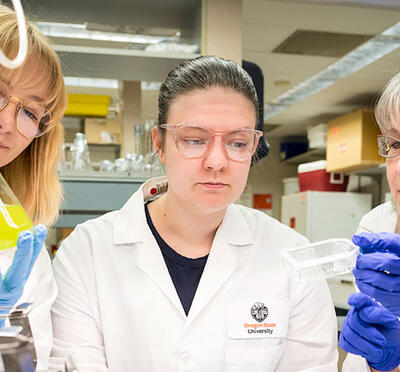Jeff Nason, professor of environmental engineering and associate head for graduate programs in the School of Chemical, Biological, and Environmental Engineering, has been awarded a two- year, $200,000 National Science Foundation grant to gauge differences in how physical and virtual laboratories prepare students for an engineering career. In particular, he and co-principal investigator Milo Koretsky — an emeritus professor of chemical engineering at Oregon State University who now has a joint appointment in engineering and education at Tufts University — intend to determine if the two modes of learning foster the development of different but complementary skills.
The knowledge gained will better position engineering educators to design and establish virtual and physical laboratories, including labs for situations where students are place-bound and may not have access to physical equipment, according to Nason.
“As more engineering classes and degree programs move online, we need ways to ensure that virtual labs can accomplish the same goals as their physical counterparts,” Nason said.
The grant proposal emerged from the inaugural cohort of projects funded by the Center for Research in Engineering Education Online, or CREEdO — a collaboration between the College of Engineering and Oregon State Ecampus. The other projects from this cohort focused on making online courses more inclusive and incorporating extended-reality simulations and learning tools into online classes.
Nason explains that laboratory work provides an important opportunity for engineering students to form skills that will be essential in their profession, such as working effectively in teams, considering problems in context, making evidence-based decisions, and persisting and learning in the face of failure.
“Engineering is about solving problems, but we’d like to know if students approach problems differently depending on whether the lab is virtual or physical,” he said. “Does one environment lead to a high number of evidence-based decisions while the other promotes decisions based more on the quality of the team’s social interactions? How do students in each type of lab respond to being stuck? Does one foster more tolerance for failure more than the other?”
The CREEdO study protocol calls for four teams of three students each to conduct jar testing in both physical and virtual labs. Jar testing is a laboratory procedure commonly used by design engineers and drinking water treatment plant operators to optimize physical and chemical conditions for the effective coagulation, flocculation, and settling of particulate contaminants from water. The first round of lab work has been completed, and the NSF funding will allow the researchers to conduct a second round of observation and analysis.
Based on their lab results, the students, acting as teams of engineers, must deliver a recommendation by the end of the day. Virtual experiments can take just minutes to run, so each team is given a realistic time budget that adjusts for the length of time it would take to complete a set of jar tests in the real world.
“That means that students in the virtual lab can’t just endlessly or mindlessly repeat tests if things aren’t working out,” Nason said. “We want them to face the same realistic constraints they would encounter in a lab where they might work one day. Thus, students need to use data from their prior runs with first-principles knowledge and engineering judgment to converge on a process recommendation.”
Study data will come from three primary sources: video records and researcher observations of the teams as they complete their assignments, semistructured stimulated recall interviews of the students and laboratory instructors, and the students’ experimental results.
Though the study focuses on a process that is specific to environmental engineering, the results should be applicable to teaching and learning practices across other engineering and science disciplines that incorporate lab work, according to the researchers.
“If we’re going to be effective at offering online courses and degrees in these disciplines, we have to figure out a way to design effective virtual laboratories,” Nason said. “So, we need to offer the best possible simulation-based lab experiences, no matter where students are located.”




